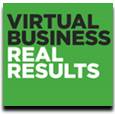
Introduction
We recently announced the launch of the new INXPO VX Platform. With VX, we made a deliberate and decisive shift in the visual language used for virtual events. These changes are a result of listening to the market. The industry has evolved rapidly and so has our clients’ approaches towards building virtual events.
A Brief History of Virtual Events
Traditional virtual environments are designed to evoke the look of physical events. Areas such as “show floors,” “booths” and “auditoriums” are rendered as “3D-like” representations of their real-world counterparts. Events created within our VX platform take a more streamlined approach. While an individual “space” may still include a graphical treatment inspired by its physical event analog, navigational elements and content now take center stage.
In my mind, these two different approaches perfectly encapsulate the past and the future of the virtual events industry.
The physical event metaphors became the standard during the genesis of our industry. Back in the early days, our greatest challenge was not only communicating the value of virtual events, but explaining the new concept of virtual events to an audience that was accustomed to static, flat websites.
Three-dimensional show floors and booths made the new concept of virtual events more comprehensible to users by leveraging their familiarity with physical events. In addition, early adopters of virtual event technology often struggled to determine what content would create an engaging user experience.
As a result, many sponsors would repurpose static documents and pages from their websites, rather than making use of rich media. Graphical flourishes often served as a means to create a visually appealing experience in the absence of consistently compelling content.
Where the Industry is Headed
The climate of virtual events software has changed dramatically, and the new visual language used by our VX platform was created in response to these changes.
Virtual events are quickly gaining mainstream acceptance. With hybrid events, physical and virtual are no longer seen as mutually exclusive. Many physical event producers view virtual “extensions” as a means to expand their reach and keep their audience engaged long after a physical event has ended.
Most importantly, we are witnessing a shift in the attitudes toward content in virtual events. Event hosts are no longer satisfied with using virtual events as a platform to house static content, and are embracing the use of live video, interactive forums and user-generated content. This content-centric approach to programming enables organizations to better connect with their audience and maintain their interest for a far greater period of time.
Virtual event producers are beginning to realize the value of streaming live content from their physical events into their virtual environments. Audiences find these unrepeatable moments to be the most compelling type of content. Creating a real-time conversation between the physical and virtual audience helps the virtual audience feel that they are active participants in an event, rather than viewers of a small subset of event content.
Content and Brands Take Center Stage
VX environments are designed to showcase this kind of rich multimedia content. Graphical flourishes such as booths and show floors no longer take center stage. Navigation has been simplified and made more intuitive, empowering users to access content more easily, without training or support documents. In early virtual events, attendees would spend a great deal of time navigating and exploring the environment. VX environments place a greater emphasis on the consumption of content and social interaction.
The new visual language employed by VX is better suited to reinforce a brand’s identity. In the traditional model for virtual events, environment configuration began by selecting graphical booths from a pre-defined library. These assets, while visually appealing, did not always lend themselves for use within branding guidelines. VX “spaces” were designed with “brand maximization” in mind, with a cleaner, more neutral appearance that does not compete for attention with branding elements.
Our central goal in developing the VX platform was to streamline the event creation process and facilitate the rapid deployment of events. In the past, event producers would spend a great deal of time designing booths and show floors. The VX platform allows producers to launch events faster, freeing producers to focus on the key element of any event: its content!
Conclusion: Evolution to a Revolution
I don’t mean to suggest that the booth/show floor analogies are completely outmoded, or that they are no longer supported by our virtual event platform. In fact, we will continue to fully support this model, along with the ability to create custom environments. The VX platform provides tools for quickly and efficiently creating events that use this new visual language, but the underlying technology is the proven INXPO platform, which provides unparalleled scalability, versatility and extensibility.
The new visual language employed by VX not only represents an evolution in our platform, but a revolution in our industry, where engaging rich media content and social interaction will serve as the focal points of engaging experiences.
About the Author

Sean Patrick Keen is a Webcasting Product Manager at INXPO. He is responsible for working with the Development and Creative teams on new product developments, and for introducing clients to new features. Sean has extensive experiencing in webcasting and has produced over 100 webcasts. Prior to INXPO, Sean spent several years working with new media companies and creative agencies, specializing in project management and web design.











